Learn how to make Thengai Sadam, a traditional South Indian Coconut Rice, at home in minutes! This light and fluffy Vegan Coconut Rice is made with freshly grated coconut, cooked Basmati rice, and a simple tempering of spices. If you have leftover rice, this flavorful dish comes together in just 10 minutes - perfect for lunch, a quick weeknight dinner, or as a side with your favorite South Indian curries and dals.
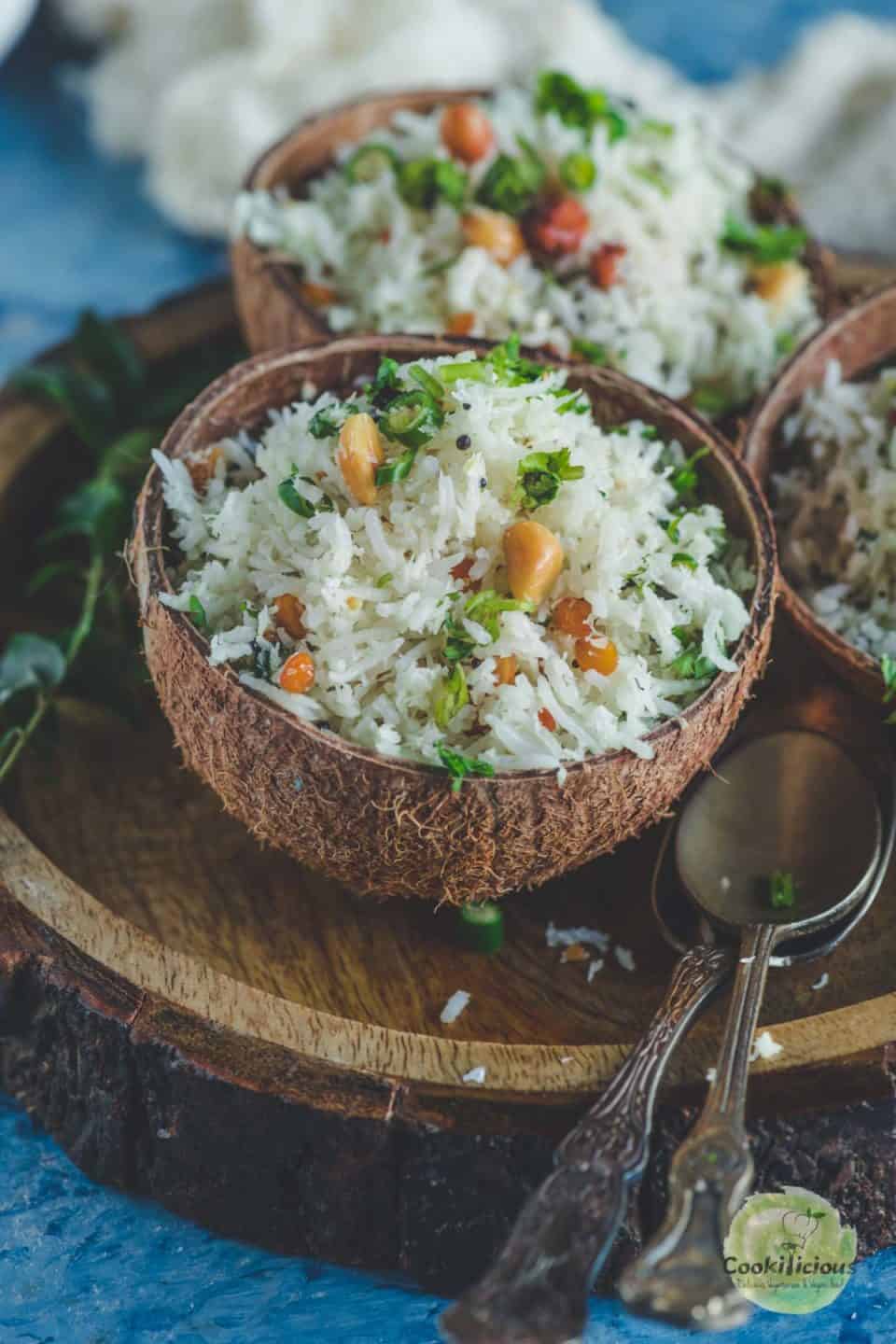
Jump to:
What is Indian Coconut Rice
Coconut Rice is a beloved South Indian delicacy made with freshly grated coconut, cooked rice, crunchy nuts, aromatic spices, and herbs. It's savory, mildly sweet, nutty, and lightly spiced - a simple yet flavorful rice dish that's popular across South India.
We call it Thenga Sadam or Thengai Sadam in Tamil, where "Thenga/Thengai" means coconut and "Sadam" means rice. This traditional Vegan Coconut Rice is so delicious and easy to make, you'll find yourself cooking it on repeat!
Coconut is abundant in South India, which is why it's a key ingredient in many classic South Indian recipes. From Avial, Chettinad Chickpea Coconut Curry, Beetroot Poriyal, and Keerai Kootu, to Coconut Ladoo, Rose Coconut Ladoo, Thengai Pooranam Kozhukattai, and Thengai Chutney, coconut adds rich flavor and a touch of tropical comfort to everyday meals.
Growing up, Thenga Sadam was a beloved weekend staple in our South Indian home. My mom would also make it on auspicious days and festivals like Navaratri, Ganesh Chaturthi, or during any pooja at home when we avoided dishes made with onion and garlic. On such days, she always used to cook it fresh- never leftover - so it could be first offered to the gods as naividhyam or prasadam.
South Indian Kalanda Sadam
In South India, we enjoy a wide variety of flavorful rice recipes known as Kalanda Sadam - where Kalanda means "mixed" and Sadam means "rice." These simple yet delicious South Indian rice dishes are an integral part of everyday meals and festive spreads alike.
Kalanda Sadam recipes are packed with bold, comforting flavors and are incredibly easy to make at home. Popular variations include Tomato Sadam, Lemon Rice, Capsicum Pulao, Ellu Podi Sadam, Puliyogare, and Thayir Sadam. In many households, these Kalanda Sadam recipes are a smart way to use leftover cooked rice - but for special days, its freshly made and then seasoned to perfection.
Why Make It
- ✨ Vegan and gluten-free
- 🥣 Minimal prep needed
- 🍚 Simple one-pot meal
- 🫙 Uses very little oil
- ❌ Made without onion and garlic
- ⏱️ Ready in just 10 minutes with cooked or leftover rice
- 🧂 Made with basic pantry staples
- 💚 A family favorite everyone will love!
Ingredients needed 🧾
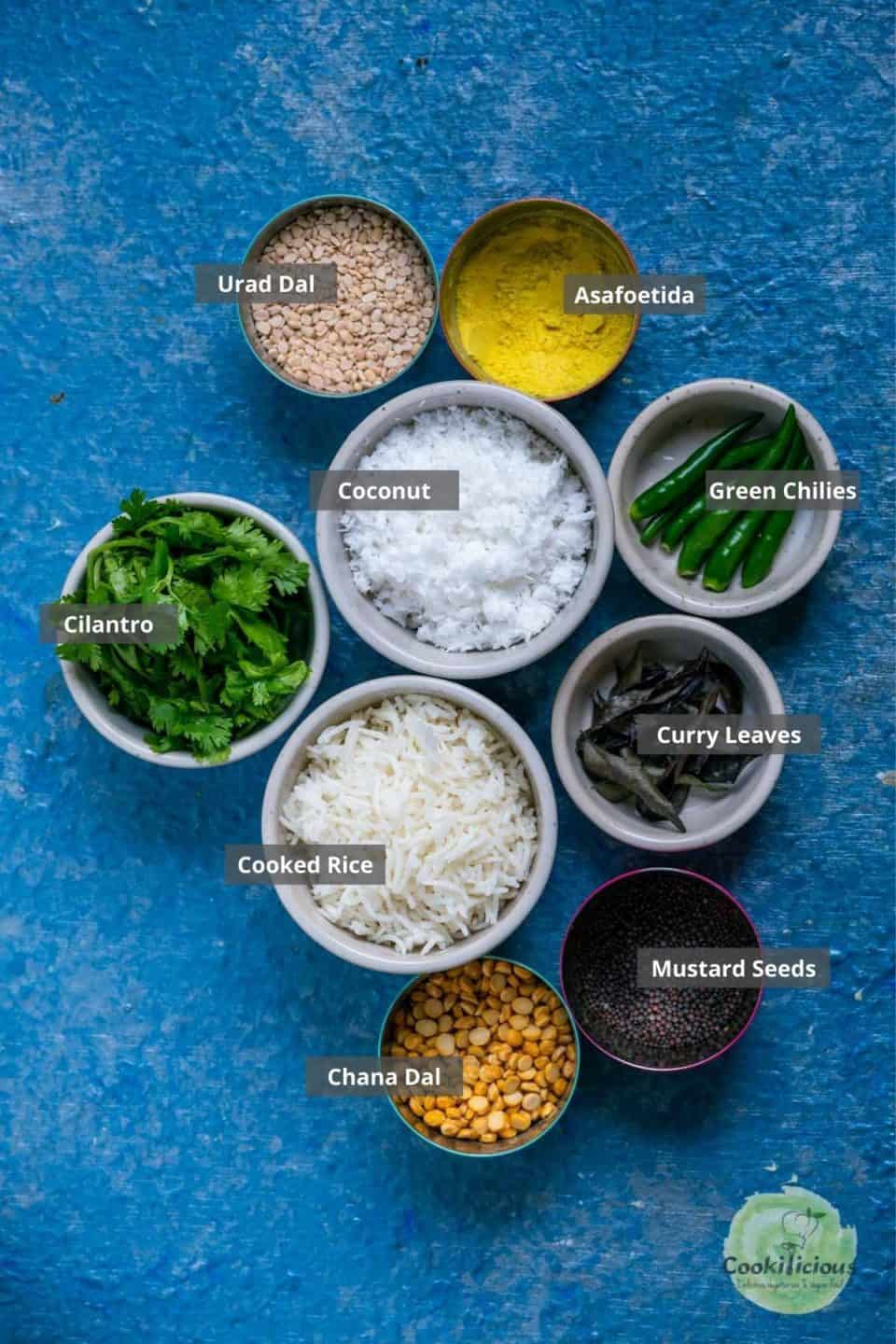
Rice - You can use any leftover rice for this recipe. Freshly cooked rice works too - just be sure to prepare it in advance and let it cool completely. Soaking the rice before cooking helps keep the grains separate and prevents them from becoming mushy.
Basmati works beautifully for Thengai Sadam, but you can also use short-grain varieties like Surti Kolam or Sona Masoori. Avoid using Jasmine rice, as its fragrance and texture don't suit this dish. Brown Basmati is another good option if you prefer whole grains.
Coconut - Traditionally, freshly grated coconut is used to make Thengai Sadam. If that's not available, frozen grated coconut, unsweetened shredded or desiccated coconut, or even fresh coconut slices (pulsed in a grinder) all work well. I've tested them all and they turn out great! For this Coconut Rice recipe, I've used frozen grated coconut from an Indian grocery store.
Nuts and lentils - raw Chana dal and urad dal add crunch and texture, while peanuts and cashews bring a lovely nutty flavor. Skip if allergic.
Spices and herbs - Black mustard seeds, gluten-free asafoetida, green chilies, fresh curry leaves, and fresh cilantro combine to give Thengai Sadam its authentic South Indian flavor and aroma.
Oil - Coconut oil is the best choice as it gives Thengai Sadam its signature fragrance, but you can also use vegan ghee or any neutral vegetable oil.
How to make it 🔪
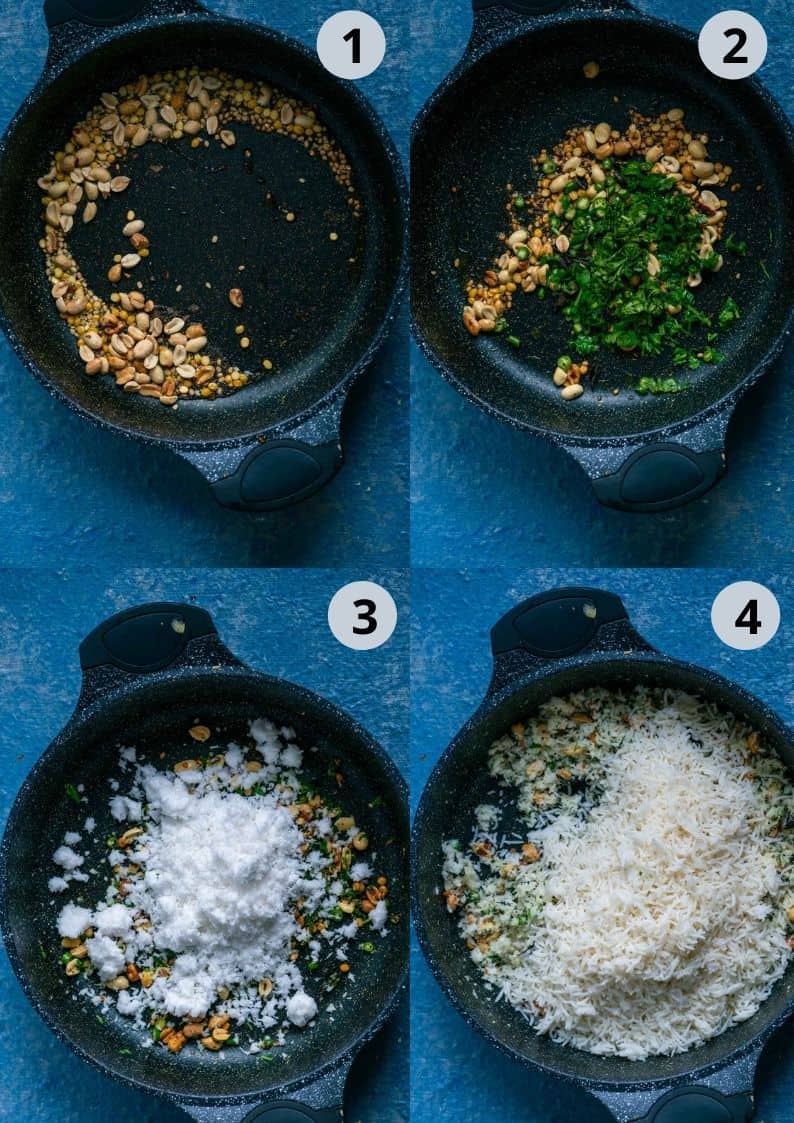
Want to save this recipe?
- Heat coconut oil in a pan. Once hot, temper the black mustard seeds. Once they begin to splutter, add GF asafoetida, raw urad dal, and chana dal. At this stage, you can also add peanuts and cashews if using.
- When the dals and nuts turn a light golden color, tear and add the curry leaves, minced green chilies, and half of the chopped cilantro. Sauté for about 2 minutes.
- Next, add the grated coconut and salt. Stir well and cook for another 2 minutes.
- Finally, add the cooked rice and gently mix everything together. Cook for 2 more minutes, then check the seasoning and adjust salt if needed. Garnish with the remaining cilantro and remove the pan from the heat.
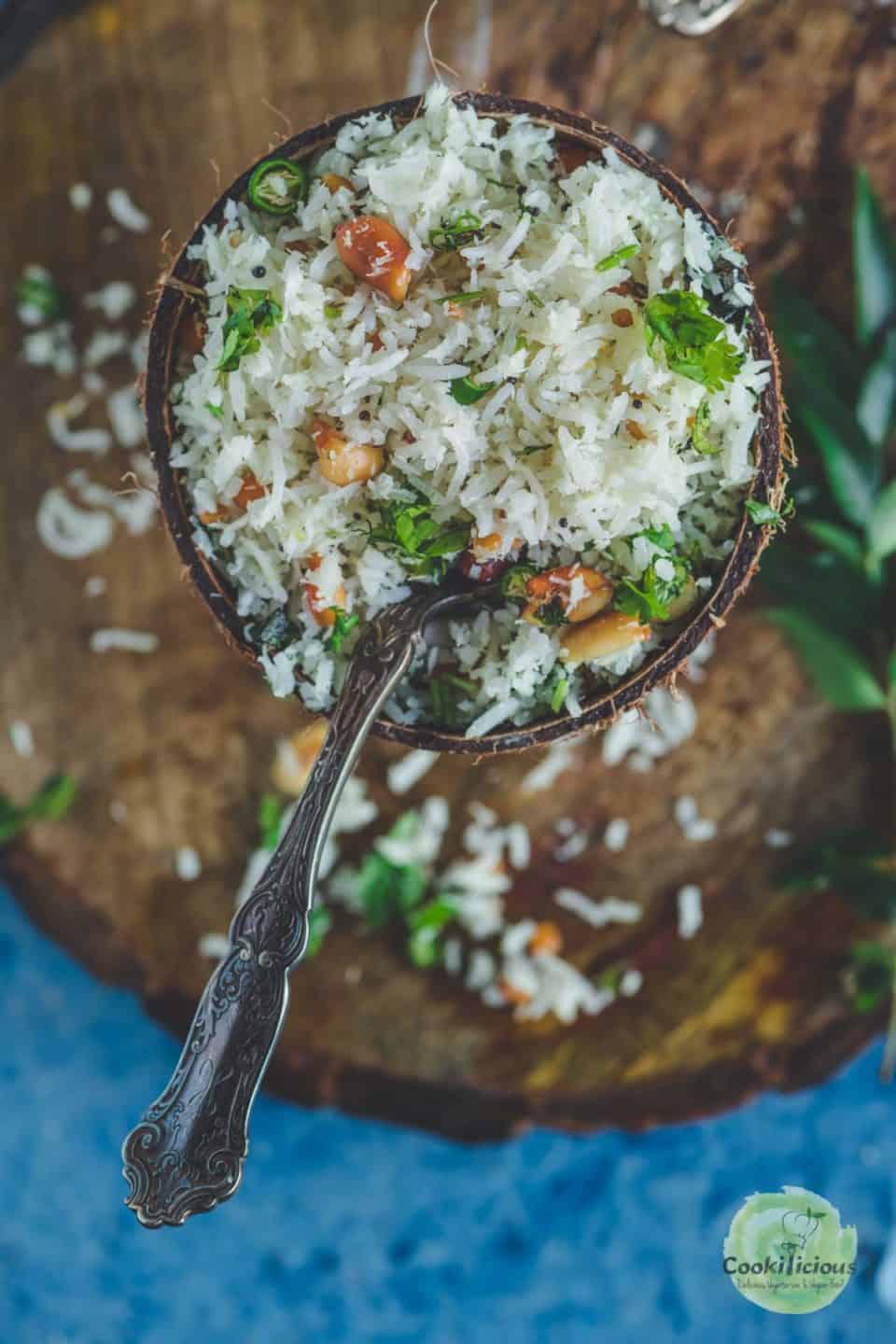
🍽 Serving Suggestions
I like to enjoy this South Indian Coconut Rice as is, but you can also serve it with tomato chutney on the side. Some people love it paired with sambhar, curry, or even a crispy potato roast. My grandmother used to enjoy Thengai Sadam with Indian pickle and papad - a delicious combo worth trying!
Indian Coconut Rice makes a great evening snack, breakfast, or a convenient lunchbox or picnic option. It's even perfect to take along on short road trips. Traditionally, this dish is also prepared as prasadam or neivedyam for festivals and celebrations.
This Thengai Sadam recipe is incredibly flavorful, making it an ideal choice for potlucks and gatherings - it's always a crowd favorite! Meals like this deserve a permanent spot in your weekly menu rotation.
💭 Priya's Recipe Tips
If you find the fried lentils difficult to chew, soak the chana dal and urad dal in water for 10 minutes before cooking to soften them. To boost the protein content of this carb-rich dish, consider adding cooked beans or legumes such as chickpeas, black-eyed peas, black beans, or kidney beans. If you prefer, you can also substitute dried red chilies for the green chilies for a different flavor and heat level.
Recipe FAQs 📖
Traditionally, fresh grated coconut is preferred for this Indian-style Thengai Sadam recipe. However, if fresh coconut isn't available, you can use frozen or unsweetened shredded coconut or desiccated coconut. Coconut slices also work well - simply pulse them briefly in a grinder before using. When using frozen grated coconut, be sure to thaw it completely for best results. I've made this South Indian Thenga Sadam with all these types of coconut, and they all turn out delicious. For this recipe, I used frozen grated coconut purchased from an Indian grocery store.
For the best results in this South Indian recipe, leftover rice is preferred. However, you can also cook fresh rice-just make sure the grains are long, separate, and not sticky. If cooking fresh, prepare it well in advance and let it cool completely before using.
You can use any variety such as Basmati, Ponni, Sona Masoori, or Surti Kolam to make Thengai Sadam. A handy tip: if you order Indian takeout and get a large portion of white Basmati, save it to make Thengai Sadam or other South Indian Kalanda Sadam.
To enhance flavor, try adding a little coconut milk to the water when cooking Basmati-this adds richness and depth.
You can also use healthy alternatives like brown rice, cauliflower rice, or even grains like quinoa, making it a versatile, gluten-free, and nutritious meal option.
Making Thengai Sadam in the Instant Pot is quick and easy! Follow the method I use for Jeera Rice: simply add all the ingredients, spices, and seasonings, along with the rice into the Instant Pot. Do not add the freshly grated coconut at this point. Pressure cook for 4 minutes, then release the pressure manually. Open, add the fresh coconut, fluff the rice gently with a fork and serve.
Using the Instant Pot not only speeds up the process but also helps the flavors meld beautifully for a perfectly cooked Instant Pot Coconut Rice.
You can easily make Thengai Sadam recipe ahead of time and store any leftovers in the refrigerator for 1-2 days. For best results, store in an airtight container to maintain its freshness and flavor. Reheat in the microwave.
If you've used fresh grated coconut in the recipe, be mindful that it may spoil faster, typically within a day or two, so consume leftovers promptly.
Proper storage ensures your South Indian Thenga Sadam stays delicious and ready to enjoy as a quick meal or snack.
More South Indian Recipes
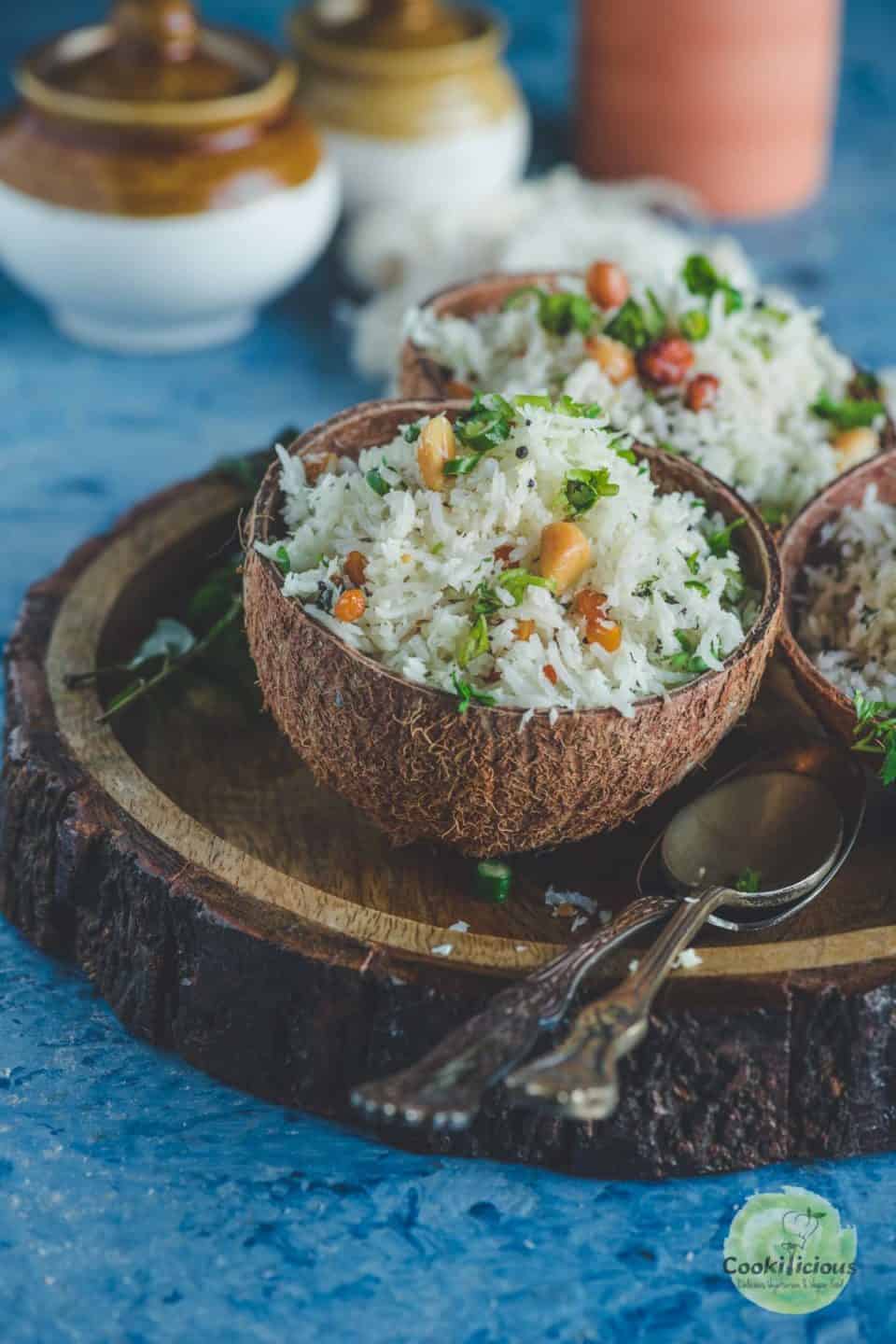
⭐️ Subscribe to the Cookilicious Newsletter and receive new recipes straight to your inbox! You'll receive my FREE Vegan Beginner's guide as a gift. Ready to elevate your cooking game? Purchase my Cookbook - The Essential Vegan Indian Cookbook today!
Recipe 📖
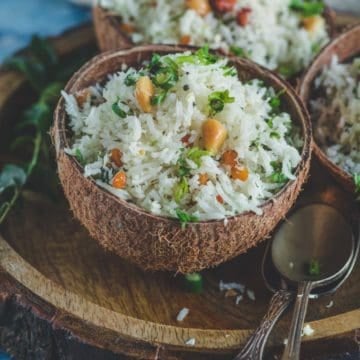
Easy Indian Coconut Rice Recipe (Vegan Thengai Sadam)
Equipment
Ingredients
- 2 cups cooked Basmati rice
- 1 cup fresh/frozen grated coconut
- 1 tablespoon coconut oil
- 2 teaspoon mustard seeds
- ¼ teaspoon asafoetida
- 1 tablespoon urad dal
- 2 tablespoon chana dal
- ¼ cup peanuts optional
- ¼ cup cashews optional
- 6 curry leaves
- 6 green chilies minced
- ⅓ cup cilantro
- salt
Instructions
- Heat coconut oil in a pan. Once hot, temper the black mustard seeds. Once they begin to splutter, add GF asafoetida, raw urad dal, and chana dal. At this stage, you can also add peanuts and cashews if using.
- When the dals and nuts turn a light golden color, tear and add the curry leaves, minced green chilies, and half of the chopped cilantro. Sauté for about 2 minutes.
- Next, add the grated coconut and salt. Stir well and cook for another 2 minutes.
- Finally, add the cooked rice and gently mix everything together. Cook for 2 more minutes, then check the seasoning and adjust salt if needed. Garnish with the remaining cilantro and remove the pan from the heat.

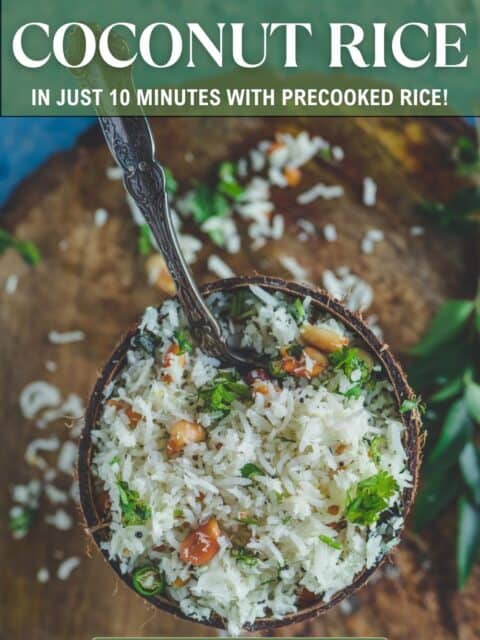
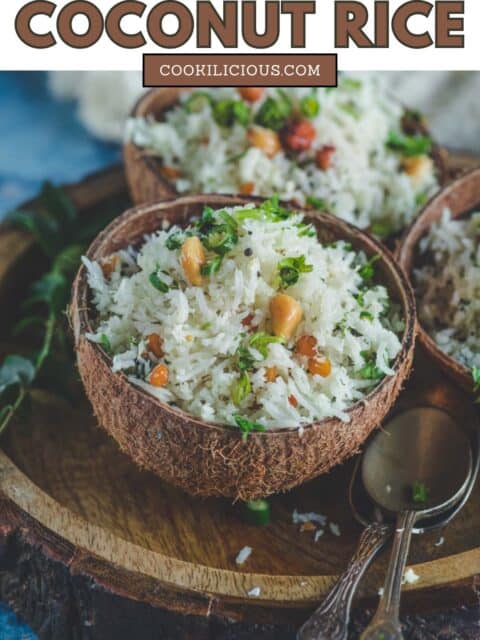
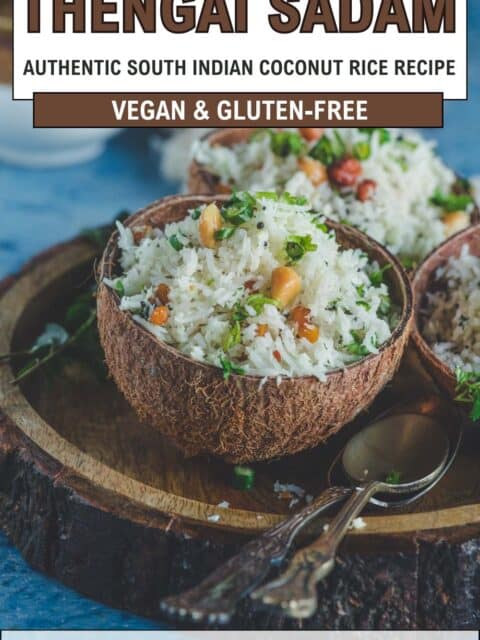
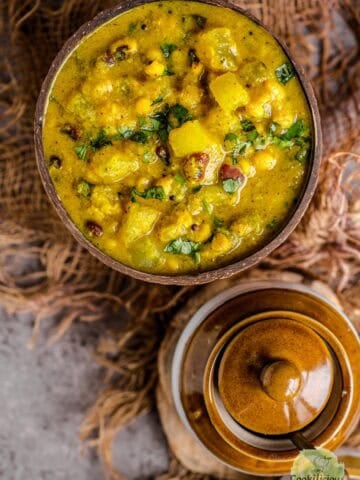
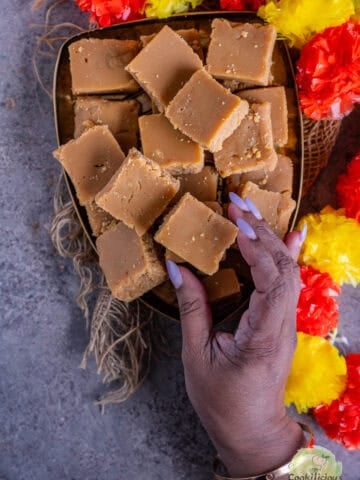
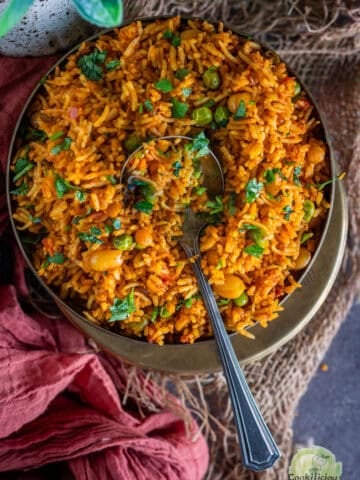
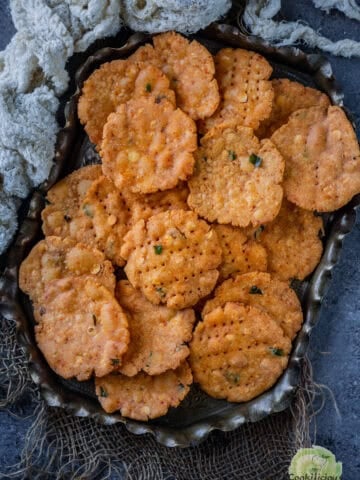

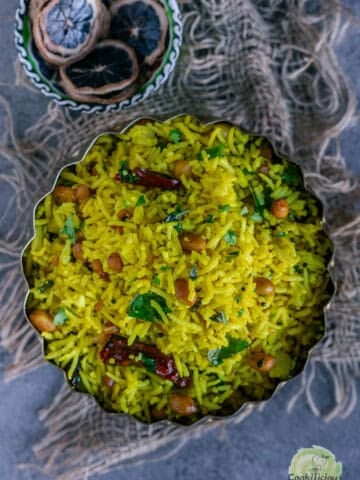
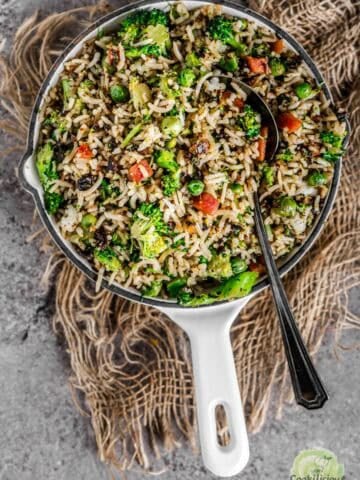
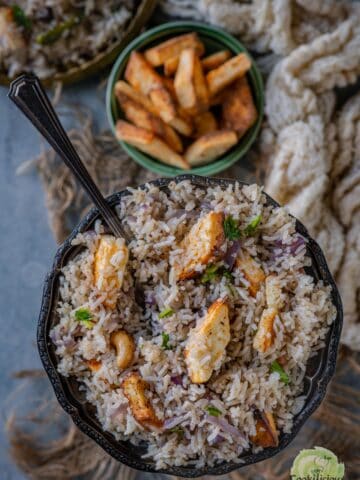
Smeyr says
Do you use black mustard seeds here or yellow or does it matter?
Priya says
I have never used yellow mustard seeds. We at home always use black ones in Indian cooking. They both have different flavors. Prefer to use black seeds. Hope this helps.
Jess says
This sounds so tasty! Pinned!
Abirami says
Yummy coconut rice, like it a lot....very beautiful picture.....so tempting....